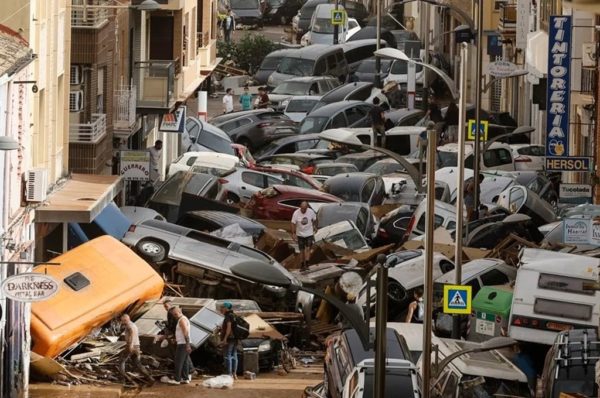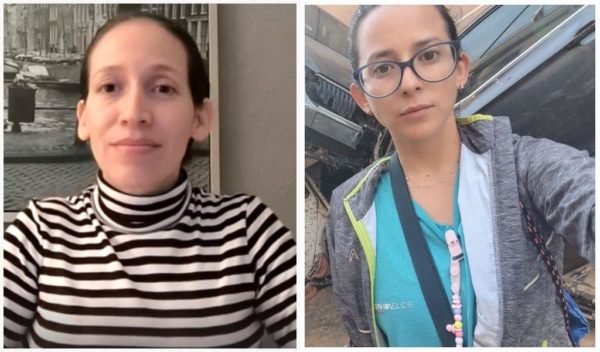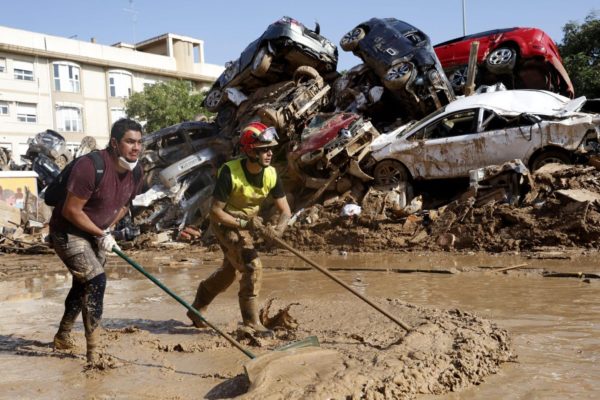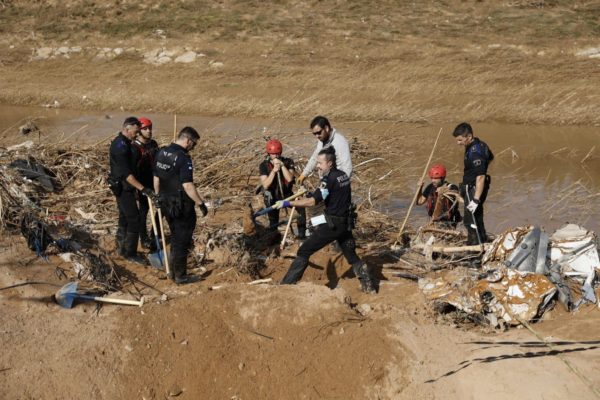Interview with Nicaraguan Survivors of the Valencia Tragedy
“The alert didn’t reach us until we were already flooded”

Two Nicaraguan sisters living in Valencia describe the agonizing hours that followed the storm and flooding that left 219 dead and 36,572 rescued.
HAVANA TIMES – Nesbeling Galves and Sofia Sequeira are two Nicaraguan sisters who’ve resided in Spain for six and thirteen years respectively. Both survived the phenomenon termed a High-level Isolated Depression (DANA), that struck the Spanish province of Valencia on October 29th. They described the storm “like something out of a horror film,” and are still working to grasp what happened. They criticize the Spanish warning systems that should have alerted them: “no one warned us of the risk of flooding.”
The two sisters told their story during the weekly television news program Esta Noche broadcast on Confidencial’s YouTube channel due to the television censorship in Nicaragua.
Sofia recalls that at approximately 8:20 pm, when the flooding began in the town of Alfafar, “there was a lot of wind, but it wasn’t raining.” She was preparing to make supper, when a family member called to alert her. When Sofia went out to the balcony on her third-floor apartment to look, she saw her car floating in the water. From that moment on, the water level didn’t stop rising.
“We heard something like a river, a noise, in the middle of a storm without rain. It was the sound of the water that was running down the streets, and the people trying to grab their cars so they wouldn’t float away from them,” Sofia recounted.
In a few minutes, the rising waters had covered the first-floor windows on the row of buildings. “We couldn’t do anything, only beg God to calm that storm.”
Worried about what was happening, Sofia then called Nesbeling to warn her of the flood. However, her sister, who lives ten minutes away, thought it was all a joke and answered that everything there was fine.
Then Nesbeling looked out. “When I went out to the balcony, I saw a whole lot of traffic, something that’s not normal here, and the people were very upset and hurried. They began to drive their cars onto the sidewalk, the pavements. Then about three blocks away, I began to make out something like a waterfall, a small river,” she stated.
“Not even five minutes passed,” she emphasized, before the current began to pile cars in front of her balcony, which directly overlooks a train overpass. “There were a lot of cars piling up there; they were forming a mountain, and suddenly we heard how they exploded, how the wall broke into pieces and the cars were swept away,” she detailed.

The hours that followed were pure anguish. The water level continued rising, and darkness was everywhere. “You could only hear the force of the water, and see pipes, pieces of wood, furniture, being swept along, (…) The current was so strong that it knocked down the doors of the lower apartments and that’s where the things we saw were coming from,” recalled Nesbeling.
The sisters explained that while they watched the water rising, they couldn’t stop thinking about the people who lived in the first-floor apartments and in their own possibilities of reaching the roof if needed.
“The water level began to drop around 12:30 am. At that hour, I went to the window and saw some people beginning to cross by on the main avenue, which was the place where the current was going by with less force. The water was up to their waists or above,” said Sofia.
No warning to the population
Nine days after the flood, the Spanish Data Integration Center, charged with compiling information about the mortal victims of this lethal weather event in Valencia, has confirmed 219 fatalities, including 54 bodies that still haven’t been identified.
The death investigation offices set up by the National Police and Civil Guard in collaboration with the forensic doctors, has counted 93 active cases of missing persons.

The High-level Isolated Depression, with its intense rainfall and subsequent flooding, primarily affected the Valencia, however, it also impacted some of the towns in the Castilla-La Mancha and in Andalucia. The number of people rescued from the flooding has risen to 36,572.
The local press and citizens question the Spanish authorities’ emergency management. The population complains of not being warned in time about the floods and the magnitude of the storm.
Sofia pointed out that previous to the flood the population had received an alert regarding heavy rains. However, “here [in Valencia], such alerts are normal.” She condemned the fact that the authorities “at no moment” warned about the danger of flooding.
“The warning not to leave home reached us at 8:30 at night, when everything was already flooded; meanwhile, in Paoiporta where the dry canal running down the middle of the town overflowed, people were already up to their necks in water. Some people were on top of the cars when their phones buzzed with the alert,” commented Sofia Sequeira.
The authorities responsible for tracking the weather phenomenon
At tirst, Nesbeling Galves blamed the companies for the deaths of those people who the storm hit while they were leaving work. Now, though, she blames the local and national authorities for what occurred.

“What happened is that, in general, the population didn’t get any more information about the alert that went out. Most of us were expecting rain, and we didn’t see the rain,” she stressed.
Nesbeling added: “There was an interview with the president of the Valencian Community (Carlos Mazon), and he said we were out of danger around six or seven that evening. And no, it wasn’t like that. It was raining in the mountains, and that rainfall came down with so much force that it began to tear through everything in its path. But we didn’t know this. We didn’t know, and that’s why there were a lot of people in the street.
The Spanish journalist Meri Molero lives in the Barrio de Jesus in Valencia, very close to the towns affected by the weather phenomenon. She told Esta Noche: “It’s impossible to develop a clear diagnosis of what happened because we’re speaking about 70 towns with their entire populations, and we’re talking about those people’s lives (..) about the economy, politics.”
Over the past few days, Molero has visited some of the zones impacted by the storm, joining the wave of solidarity and support for the families affected. She stated that it’s essential that movement within the towns begin to function again, and that the authorities “had made that issue a huge-priority.”
First published in Spanish by Confidencial and translated and posted in English by Havana Times.





